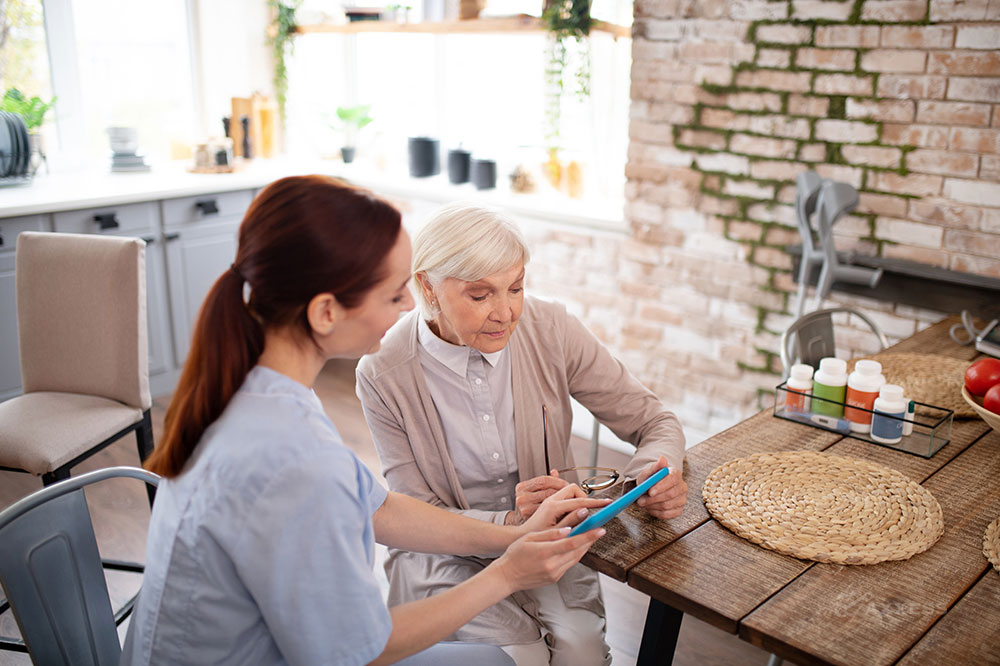
Because the Home Health Consumer Assessment of Healthcare Providers and Systems (HHCAHPS) survey will be critical in the upcoming value-based purchasing environment, home health organizations need to be aware of what the survey measures and how to optimize HHCAHPS performance.
As each item in the HHCAHPS grading is reviewed, there are several ways remote care monitoring (RCM) can help organizations improve the outcome scores relative to the survey:
- Care of Patients – With a well-equipped RCM program, an organization can add significant time with the patient remotely. Having availability on a 24-hour basis should be an area of focus when researching RCM programs. The face-to-face requirement is easily met for home care and hospice organizations using RCM, since the process incorporates virtual visualization of the patient during the session. Patients and their families can rest assured that professional care is as simple as touching an application on their device. Experienced para-professional remote care coordinators (RCCs) are available around the clock to receive patient requests, respond to medical needs and escalate issues to assigned nurses, physicians or other team members. The peace of mind with knowing help is at their fingertips is immeasurable.
- Communication Between Providers and Patients – Communication with patients, their family and providers is ongoing when using RCM. Clinical reports based on data collected from monitoring devices, such as weight scales, glucometers, vital signs, etc., are easily transmitted to providers or legal representatives.
- Specific Care Issues – Clinical case conferences are vital to care excellence. Using RCM for care conferencing and team meetings is quick and easy. There is no need to set in-person meetings with busy professionals. Often patients’ family members are hundreds of miles away and cannot attend meetings. With this technology, families can take part in team meetings by simply dialing in to the face-to-face meeting. RCM makes these sessions available for everyone in the circle of care to attend these important discussions.
- Overall Rating of Home Healthcare – This is an area that the Centers for Medicare and Medicaid Services (CMS) have found is often not answered at all or with very low scores. Using RCM to communicate with patients is one of the best ways to achieve the goal of satisfaction with overall patient care. Studies have shown that the more frequent contact is with the patient, the higher the satisfaction rating will be. RCM is an easy way to have that fulfillment of needs and individual goals met. Data collection on overall patient satisfaction by the RCM provider that is shared with families and patients can improve the response rate in this area.
- Willingness to Recommend the Agency – This is another area where CMS finds low response rates in HHCAHPS scoring. Again, more frequent contact with patients and their families will certainly improve recommendation rates for organizations when using a remote care option that is active in patient engagement and response. Satisfaction responses can be measured through RCM and shared with patients and families as a preemptive report to the receipt of the official HHCAHPS form from CMS.
We need to understand what organizations should consider over the next year to get ready for this massive change in the way we will be paid. At discharge, it is important to keep patients informed and educated. RCM is one primary way to position the organization for success.
Be sure to educate patients and families throughout their home care experience on:
- Patient condition
- Medications
- Discharge plans
- Follow-up appointments
Should the patient choose to continue with RCM services at discharge, the patient and family will feel empowered and satisfied with their experience. With ongoing RCM monitoring, the organization can be sure that if exacerbation occurs, they can be contacted for review of eligibility for additional admission.
Axxess Home Health, a cloud-based home healthcare software, provides convenient integrations to accommodate virtual visits, as well as built-in documentation tools following HIPAA guidelines.

